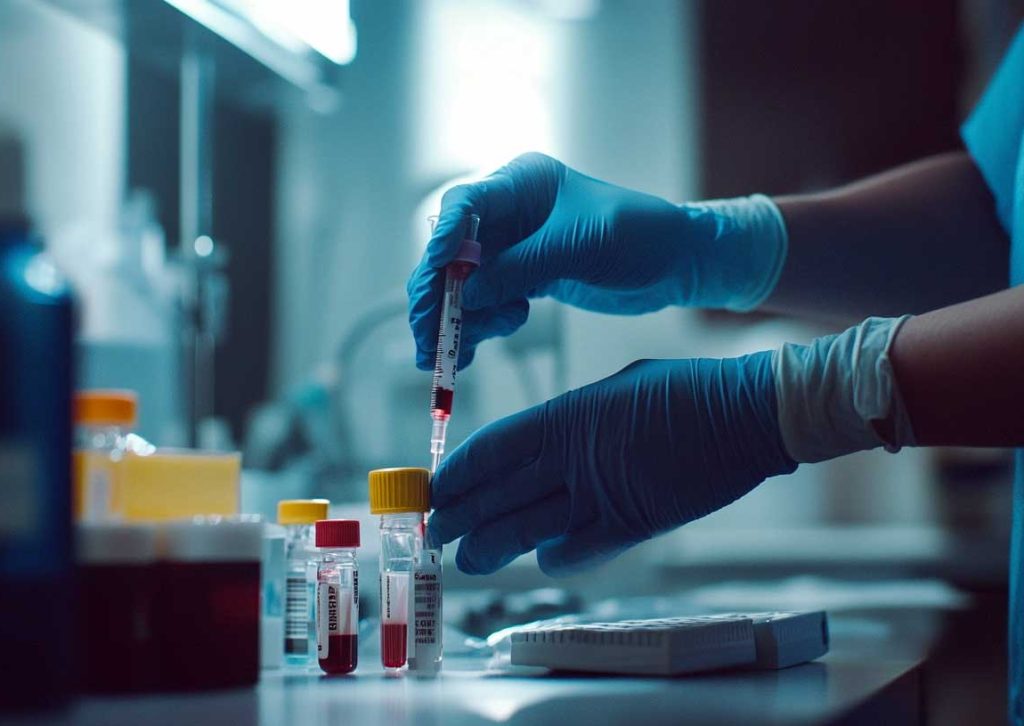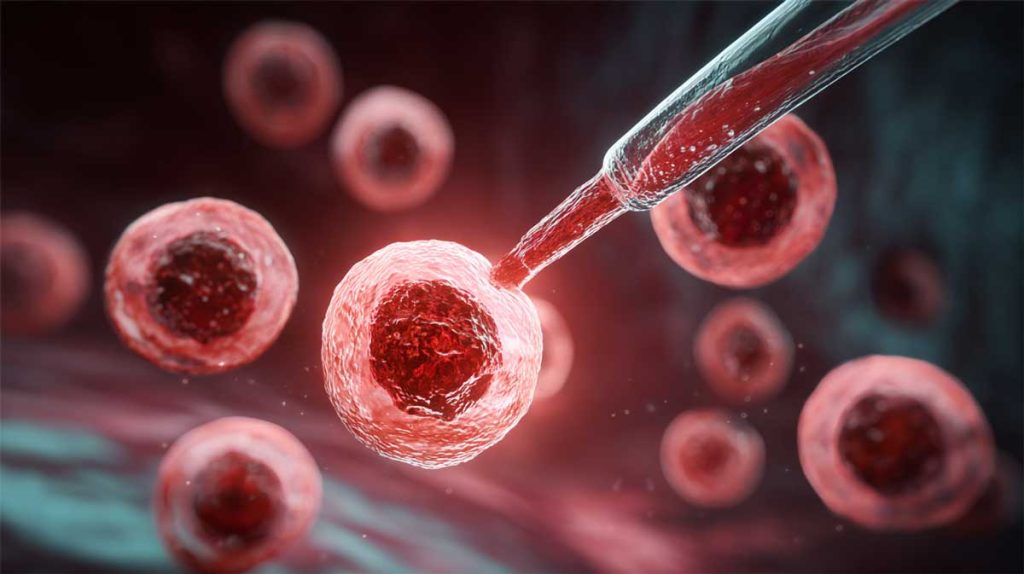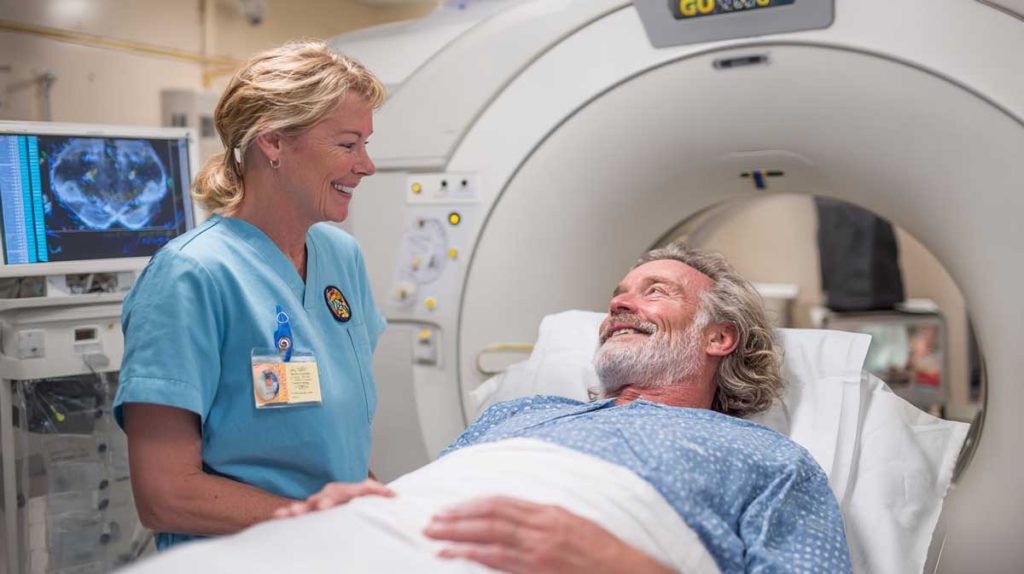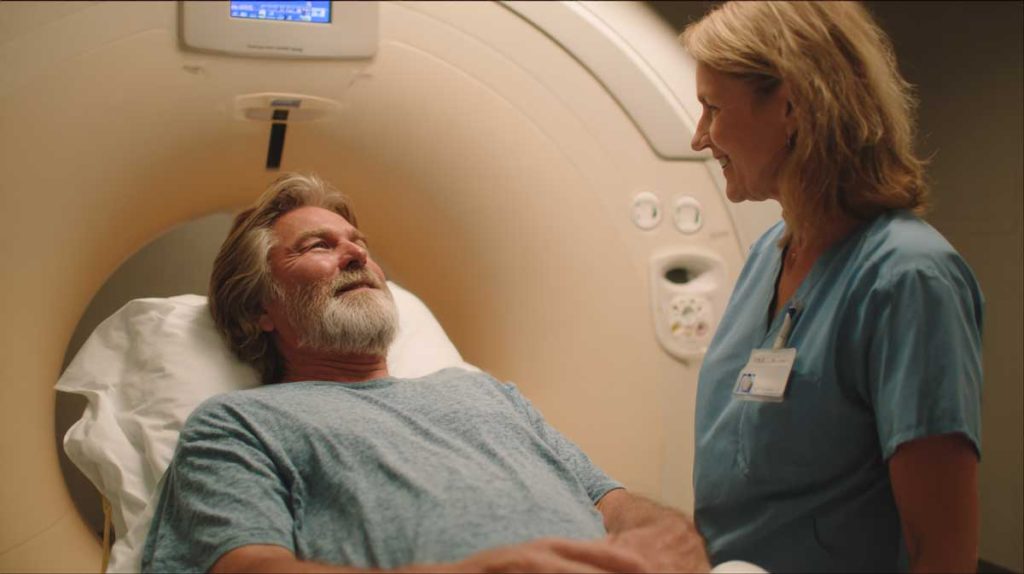Three main tests are used to diagnose and monitor Waldenstrom’s macroglobulinaemia: blood tests, a bone marrow biopsy, CT and PET scans.

You may be referred for these tests if your GP is concerned about your symptoms.
However, around a quarter of people with WM are diagnosed ‘by chance’ after routine blood tests or during investigation for another unrelated condition.
You can’t be diagnosed with WM from blood tests alone, but they may prompt your doctors to investigate further. For a blood test, a small sample of your blood is taken and sent away to be tested in a laboratory.
What are they looking for?
There are lots of different types of blood tests, and what you’re tested for will depend on the symptoms you have and the results of previous tests. The most common blood test is called the Full Blood Count.
A Full Blood Count (FBC) measures the levels of red cells, white cells and platelets in your blood. The blood ‘count’ refers to the amount of each type of blood cells. WM can reduce the number of blood cells you have resulting in low ‘blood counts’ which may be the reason why you’re experiencing certain symptoms. For example, a low red blood count can cause symptoms of anaemia.
Other blood tests that help doctors diagnose and monitor WM are:

When you have been diagnosed with WM, doctors will regularly monitor your symptoms and your blood samples to see how your WM is progressing.
What happens in a blood test?
Usually, you don’t need to do anything to prepare for a blood test. It’s important to let the healthcare team know of any medications (prescribed and over-the-counter) you take beforehand.
The doctor, nurse or phlebotomist (a person who is trained to take blood) will clean your skin where the blood will be taken from (usually in the upper arm at the bend of your elbow, where the vein is visible through the skin).
They’ll wrap a band tightly about your upper arm to make the vein swell. To take the blood, they’ll insert a needle into your vein at the top of your forearm, just before the crook of your arm – this might sting a little bit. You might want to rub some numbing cream on the area before the bloods are taken. If you are in pain, tell the person taking your blood.
The blood is collected in tubes – the number depends on what tests have been ordered (usually 2-3). Don’t worry, it might look like a lot, but the samples of blood are only small. Once they’re finished, they’ll remove the band from your arm and take the needle out. They’ll tape a plaster or small dressing over where the needle went in, and you’ll be able to remove this in a few hours.
Some people feel dizzy or nauseous during a blood test. If you are concerned that you might feel this way, ask someone to come with you. If you feel ill during or after your test, sit down and tell your doctor or nurse who will be able to help.
Bone marrow is the spongy tissue found in the middle of the bigger bones in your body. This is where blood cells are made.
A bone marrow biopsy is a procedure where a small sample of your bone marrow is removed and tested to see if it contains abnormal cells. This test is the only one that can diagnose Waldenstrom’s macroglobulinaemia, because WM is a cancer of the bone marrow.
What happens during a bone marrow biopsy?
A bone marrow biopsy takes around twenty minutes, and most people will go to hospital for the procedure and come out on the same day.
Before you have a biopsy, your medical team will give you information about any medication you might need to stop or take (such as blood thinners), and any other preparations. Remember to tell them about any medication or supplements you’re taking before the procedure.
A bone marrow biopsy is usually taken from the back of your hip bone (pelvis). The skin where your biopsy will be taken is cleaned and then the doctor or nurse will inject local anaesthetic into the area. You might feel a sting from the needle, but after a short while the area will go numb.

When the area is numb, the doctor or nurse will put the needle into your bone. They may use a manual needle or a battery powered needle that looks like a small drill. Once the needle is in position, a syringe is attached.
The doctor or nurse uses the syringe to pull out a small sample of your bone marrow, which is liquid, called a bone marrow ‘aspirate’. Some people feel a pulling sensation at this point, which can be uncomfortable. This feeling will quickly pass.
A sample of the harder bone marrow tissue, called a bone marrow ‘trephine’ is usually taken next. This will be done immediately after they’ve take out the bone marrow fluid. They will rotate the needle a few times to take a sample of this harder tissue. Many people describe the sensation as a pushing one, and there may be some pain, but it is usually over very quickly.
After the procedure, your nurse or doctor will ensure that there isn’t any bleeding, before applying a small dressing to the site. You won’t need stitches. You may experience aching and bruising around the area where the needle went in for a few days after the test.
A computerised tomography (CT) scan uses x-rays and a computer to create detailed images of the inside of your body. You may hear them referred to as CAT scans.
What are they looking for?
Although a CT scan cannot be used to diagnose WM, doctors often use the images to see if the WM is in other parts of your body. CT scans are good at showing the internal organs and will be able to show, for example, if your lymph nodes are enlarged. This may prompt your doctor to conduct further tests.

What happens in a CT scan?
Most people will have a CT scan in their local hospital as an outpatient. You should be given information about your scan before your appointment, including what to wear and any other preparation you’ll need to do.
You will normally be asked to remove any metal items (for example a watch, or an underwired bra) before you go into the scan. You may also be given a hospital gown to wear. The medical team will ask about your general health and also give you the opportunity to share any concerns or questions you have about the scan.
CT scans can take between 30-60 minutes. Once you are ready to be scanned, you will have to lie down on a bed that moves slowly into the scanner. The hospital staff will leave the room and monitor you through a glass window. You’ll be able to talk to them through a two-way speaker, and you can ask for help at any time.
The scanner doesn’t cover your whole body and you’ll need to lie as still as possible. The staff may ask you to do things like hold your breath at certain times to ensure the clearest possible picture. You’ll be able to leave straight after the scan, unless you are having any other tests.
A positron emission tomography scan (PET) scan uses a harmless radioactive sugar to trace cancer cells in the body. This is done alongside a CT scan.
What are they looking for?
Some cancer cells are very active and so use up a lot of the sugar you fuel your body with. When you have a PET scan, you will be injected with a harmless radioactive form of sugar (called a radiotracer). The scan uses a camera that picks up the radiotracer in your cells, which may show your doctor where your WM is in your body. Like a CT scan, a PET scan cannot diagnose WM by itself.

What happens at a PET scan?
Most people will have a PET scan as an outpatient at their hospital. Some smaller hospitals don’t have the facilities, so you may have to travel to a larger centre.
Before your scan, your medical team should give you information about the scan, including how you need to prepare and whether you need to fast (not eat or drink) beforehand, and what to do about any medication you take.
It’s important to tell your healthcare team about other medical conditions you may have any medication you make take, as this could impact the scan itself. If you are diabetic, it is important to have controlled blood sugar at the time of the scan.
The PET scan itseld can take between 30 and 60 minutes, but you will be in hospital much longer as you’ll be injected with the radiotracer around an hour before your scan.
For the scan itself, you’ll be asked to remove any metal items (like a watch or underwired bra). Just like a CT scan, you’ll need to lie on a bed that rolls into the scanner and you’ll need to lie very still. The staff will leave the room, but will be monitoring you behind a glass window and are there on the end of a two-way speaker so you can speak to them.
What happens after your PET scan
After the scan, you might need to stay a little longer to make sure your body doesn’t react to the radiotracer. You should limit close contact with pregnant women, babies and young children for six hours after your scan. This is because there will be some trace of radioactivity in your body from the radiotracer.
If you are planning to travel through an air or sea port within a few days of your scan, it might be worth getting a note from your doctor to say that you have recently had a PET scan. This is because ports have radiation alarms that can be triggered by extremely small levels of radiation.

This little booklet covers all the basics about WM, including what it is, how it’s treated and how to live well with the disease. It also includes useful information about the new terms you might come across, and the different types of healthcare professionals you might meet.